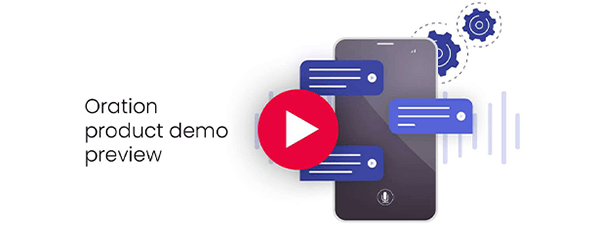If you’re a business leader, you might have considered using a consultant or a coach from time to time to help you find ways to grow your business or run operations more efficiently. But who better is there to tell you all the things that you could do better, more of, or even stop doing altogether, than your own customers? And they’ll do it for free – all you’ll need to do next is work out how to use customer feedback to improve service.
Customer feedback can come in a variety of different forms, revealing information about your customers’ experiences with a product or service as well as their level of satisfaction. For example, feedback often appears as complaints, recommendations or endorsements on a company’s website, social media channels, or external review platforms. Some customers however, might prefer to take a more personal approach to get their viewpoint across such as calling to chat to a customer services representative about their issues or sending a detailed email to the appropriate contact, team, or department.
And of course, there will also be plenty of customers who hold strong views (and possibly a few great ideas for improvements within your business) who won’t be proactive about saying anything at all – but this is where customer feedback surveys can come in very handy. By sending feedback surveys to your customers, you can encourage more specific insights about your products and services by tailoring your questions accordingly. Meanwhile, you’ll have the benefit of learning from those customers who may have useful comments to share but would otherwise choose to stay quiet.
A report by Deloitte which examines the growing power of consumers says that post-purchase, people are actively sharing views that influence others and are becoming more involved in product development. Consequently, customers aren’t just simply consuming products today, they have become both critics and creators.
The truth is, there’s a wealth of incredibly valuable information out there among your customers which could help you build a more successful enterprise. For this reason, businesses should always prioritise strategies for eliciting the most useful insights from their customers and ensuring this information can be organised and translated into real action.
Why is it important to gather customer feedback?
Attracting new customers
Knowing whether your customers are getting value out of your products or services is crucial for several reasons. With 81% of people reading reviews and checking ratings online according to the Deloitte report above, the experience your customers are having is likely to have a big impact on your success in attracting new customers into the future.
Driving brand loyalty
Following a survey of over 2,000 customers for a financial institution, the Harvard Business Review found that satisfaction surveys appear to appeal to customers desire to feel pampered, often conjuring positive thoughts about a company and influencing them to buy more. Supporting this idea, a report by Microsoft also found that over three-quarters (77%) of customers have a more favourable view of brands that ask for and accept customer feedback.
And where does all this lead – to the bottom line, of course.
Boosting revenue
Companies that successfully form more emotional connections with customers, such as by showing an interest in their views and experiences, have been found to outperform the sales growth of their competitors by as much as 85%, according to Gallup research. At the same time, another study finds that the most customer-centric companies (generally speaking), are 60% more profitable than companies that don’t treat the customer experience as a top priority.
The top ways to collect customer feedback

Customer feedback really is key to any successful business, but the question remains, how can you be proactive about getting it while taking more control over the type of insights you gather?
Long-form surveys
Surveys can be sent to customers in a variety of ways and at various stages of the customer journey. For example, they can be presented to your customers over the phone after a customer service interaction, or you might choose to find out how to use a survey form to get customer feedback, which is usually sent via email following a transaction or interaction with your company.
Long-form surveys usually consist of a set of pre-configured questions designed to find out about specific aspects of your customer’s experiences. Typically, a long-form survey will ask a customer to select ratings or responses on a numbered scale and even invite verbatim to gain more insight around the reason for their responses.
One of the benefits of conducting automated surveys over the phone is that they allow the customer to naturally verbalise their responses, so the survey takes less time and effort to complete while more useful information can be captured and recorded.
Survey questions aimed at capturing customers verbatim should always be open-ended, so customers feel encouraged to add their own views. To increase the chances of uptake and the quality of responses, it’s also crucial to make sure your questions have a clear objective that’s related to the experience your customers have just had. In other words, if your customer has just engaged in an interaction with your customer service team about an order status, it’s probably not wise to push forward survey questions about your online interface or platform. Automated IVR solutions can help companies run customer surveys more efficiently by delivering targeted surveys to customers based on the nature of the call they’ve just had.
Finally, it’s important to keep in mind that however you decide to deliver a survey, you should avoid asking too many questions. By asking too much, you’ll run the risk of receiving incomplete surveys as customers become bored, or poor-quality responses because your customers rush through to the end.
Personalised phone calls
Due to the resources involved, personally contacting your customers by phone is a method usually reserved for select scenarios. While these interactions cost more to implement per call compared to automated solutions, phone calls can deliver a great return on your investment in the right circumstances.
For example, it might be unsustainable to personally contact high volumes of customers in relation to low-value transactions. On the other hand, talking freely and directly to longstanding customers who are considered high net worth to your organisation might reveal some deeper, game-changing insights which boost revenue and drive your brand further. Forming personal connections with your most highly valued frequent customers and showing that you care could also encourage longer term-loyalty or even increase sales.
Net Promoter Score (NPS) surveys
A NPS survey is probably the quickest and simplest way to get a read on how your business is doing in the eyes of your customers without burdening them with time-consuming survey questions. Essentially, the survey only asks customers how likely they are to recommend your product, services, or brand on a 0-10 rating scale where 0 means they wouldn’t recommend at all and 10 is most likely to recommend.
The upshot is, customers who give a score of 9 and 10 are categorised as ‘Promoters’ while customers who score 0-6 are categorised as ‘Detractors’ – and people who rated 7 and 8 are discounted as passive. The percentage of Detractors is then deducted from the percentage of Promoters to give an overall NPS score of between -100 and 100.
It’s important to keep in mind that while the NPS score won’t illicit any specific or constructive feedback in the same way as a long-form survey might, it can give companies an indication of their likely growth prospects. That said, depending on when your customers receive the survey, it might point to specific weaknesses in your organisation. For example, if most of your detractors are coming from a certain target demographic, or they are coming from NPS surveys carried out after online transactions, then it might mean your online experiences or the way in which you target certain customers needs more work.
Customer Satisfaction (CSAT) surveys
Going a step further than NPS, CSAT surveys ask how satisfied a customer is with a specific experience they’ve had with a business using a 1-5 rating scale, where 5 is Very Satisfied and 1 is Very Dissatisfied. A CSAT survey might be delivered to customers – either via phone, email or SMS – asking them to rate their online ordering experience, or even the staff or customer service they’ve recently experienced at a venue or store. To reveal your business’ overall score in relation to an experience, the proportion of customers who gave a rating of 4 or 5 will be calculated as a percentage of the total number of customers surveyed. So, if you’ve sent a CSAT survey following a customer service experience, your next step is to work out how to use your customer service feedback to your business’ advantage.
Learn more about the differences between NPS and CSAT surveys as well as how they can help your business improve the customer experience.
Online forums for suggestions and feedback
Implementing an online forum to get comments or suggestions from your customers could be an effective way to obtain more direct, constructive advice about your products or services without inviting the type of emotive responses which can be more commonplace in surveys. A specially designed suggestions forum often encourages a more positive frame of mind for participating customers because it sends the clear message that you value their input, so much so, it can be provided on their own terms without having to transact with your businesses first.
Suggestion forums are also usually more collaborative in nature, giving your business the opportunity to respond, ask more questions, tell your customers what you intend to do with their feedback, or even share updates on upcoming improvements.
How to use your customer feedback
The question remains, how do you use feedback to improve customer service or your products and services once you’ve got it?
Look past the scores
It’s easy to get distracted by the numbers, especially if you’re generally pleased with your overall survey scores. But always analyse the verbatim your customers are sharing for common trends in their feedback or comments. The chances are, if a few customers are raising the same issue, then it’s probably an issue well worth addressing as a priority.
Share the feedback
If you’re going to collect feedback from your customers, don’t waste it by reading it once and filing it away. Everyone in your business will feel more empowered to make a positive difference to your customers if they can see first-hand what people are saying and thinking about their work.
Minimise reputational damage
Aside from driving improvement, receiving negative feedback is your chance to reach out to disappointed customers to resolve their issues before it translates into bad reviews or complaints to your wider audience, either via review sites or word of mouth.
Encourage and nurture brand advocates
When customers put themselves out there to offer words of praise in relation to your products or services, find ways to leverage these enthusiasts to your business’ best advantage. For example, you could reach out to your most positive respondents and ask them to share their thoughts on social media and review websites, or even invite them to participate in case studies to support your broader marketing activities.
Recognise the easy wins
You might research, test and trial products before rolling them out to the market but your paying customers should always be the most influential force around your product development strategy. Keeping on top of and actioning the most common pain points can be an easy way to quickly enhance your offering and become more competitive in the market.
In the business world, not taking customer feedback seriously is a bit like flying blind. By understanding its importance, how to collect it, and how you can use customer feedback to improve your business, you could put your organisation on the fast track to growth.
The reporting insights feature offered by Oration allows contact centre professionals to view and analyse call statistics to gain deeper insights such as top caller intents and AHT. Reporting insights can be used to influence changes to the customer experience.
The reporting insights dashboard is simple to use. Its features and behind-the-scenes technology allow large volumes of complex contact centre data to be converted into easy-to-understand insights with just a few clicks of a button. Advanced filtering tools also enable contact centre administrators to dig deeper and take more control over their insights with minimal training or analytics knowledge, such as generating reports for specific dates and times.







